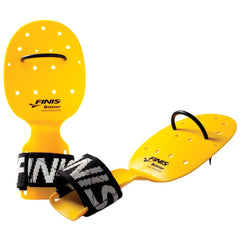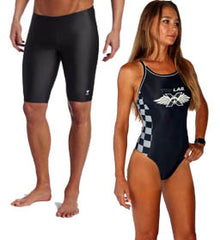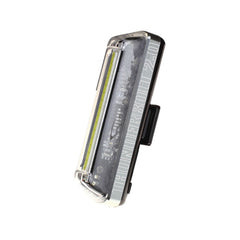Triathlon Wetstuit FAQ
Wetsuit FAQ
1. How can I tell if the wetsuit fits properly?
The wetsuit must be properly donned to evaluate fir with not gaps in the crotch or arm pit area. Please see our instructional video on how to properly put on a triathlon wetsuit. Plus see the step by step process below. Your wetsuit should fit snug, but not restrict arm motion or breathing. If you feel like your shoulders are being pulled down, it is likely to short for your torso. There should be no loose areas that will fill with water and create drag. Expect your wetsuit to loosen a bit in the water as it fills with a thin layer of water.
2. How do I care for my wetsuit?
After you use your wetsuit, rinse off with fresh water inside and out. Make sure it is inside out and let hang to dry. If you will not be using for a while then do not store on a hanger but rather loosely folded. Do not store in a non breathable bag or it will get moldy.
3. My wetsuit got damaged, can it be repaired?
Most likely , yes. If it is a tear in the wetsuit that does not go through the inner jersey then it can easily be repaired with wetsuit cement. If the tear goes through the jersey too, then it can be sent out to a wetsuit repair company as it needs to be sewn.
4. My wetsuit doesn’t fit properly. Can I exchange it?
Yes, we offer a 30 day return policy for a wetsuit that is still in brand new condition with all original tags. In addition,Triathlon LAB offers a 15 Day fit guarantee. If you swim in the wetsuit and find it is not a good fit, then you can return it for an exchange within 15 days of receiving the wetsuit. The wetsuit must be undamaged and all tags must be returned. We will exchange it for a different wetsuit. If the replacement wetsuit is not the same price as the purchased price, there will be either an additional charge or refund credit for the price difference.
5. How do I choose the right wetsuit for me?
Please see this article http://www.triathlonlab.com/how-to-choose-a-wetsuit/ .
6. Do I need to use a anti-chafe/lubricant with a wetsuit?
It is highly recommended to use an anti-chafing lubricant product such as Body Glide or Trislide. Apply the anti-chafe/lube product to neck, wrists and ankles. If using a sleeveless wetsuit, also apply lubricant around the arm holes on the wetsuit. Application at the wrists and ankles make it easier to put on and remove your wetsuit while application in the neck and arm hole region helps prevent friction rashes.
How to put on your wetsuit (see video):
1. Start with your wetsuit inside out. (Think, you want to put it on the opposite of how you take it off).
2. Make sure you are looking at the front of the wetsuit (zipper down) before beginning or you will put it on backwards.
3. Put your foot through the leg and pull it it up by the jersey side (to avoid nicks and tears) about 2-4 inches at a time until you are at the crotch area. There should be no gaps. If there is a gap there, roll it back down and pull up more in same fashion.
4. Once there is no gapping in the crotch, pull up the torso in preparation for arms
5. Put one hand through a sleeve. Find the opening of the arm hole by using your other hand. Using your other hand again, pull the sleeve up to shoulder. To finish up, grab the wetsuit with one hand below the shoulder and stretch out and lean over and pull to one side.
6. Repeat with other sleeve.
7. To bring wetsuit in right position, bend over, reach inside your wetsuit from the neck and grab some neoprene in your chest or neck area and bend forward. Repeat a couple of times until the wetsuit is positioned correctly.
8. Zip the wetsuit: Push your shoulders back then pull both shoulders together and hold with one hand while grabbing the zipper string with the other. Zip up taking care not to catch clothing underneath your wetsuit. Attach the zipper string to the velcro and then close neck velcro. You are ready to swim!




























